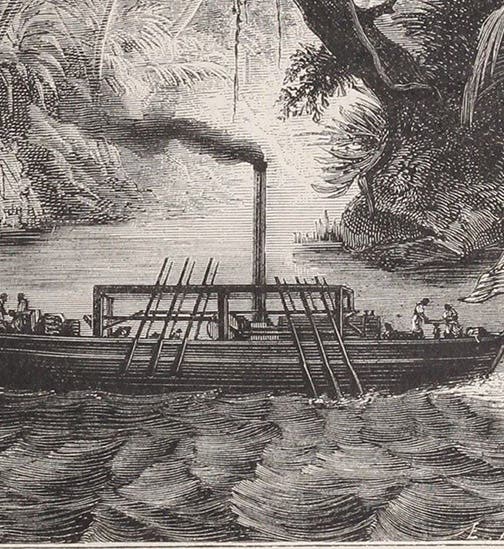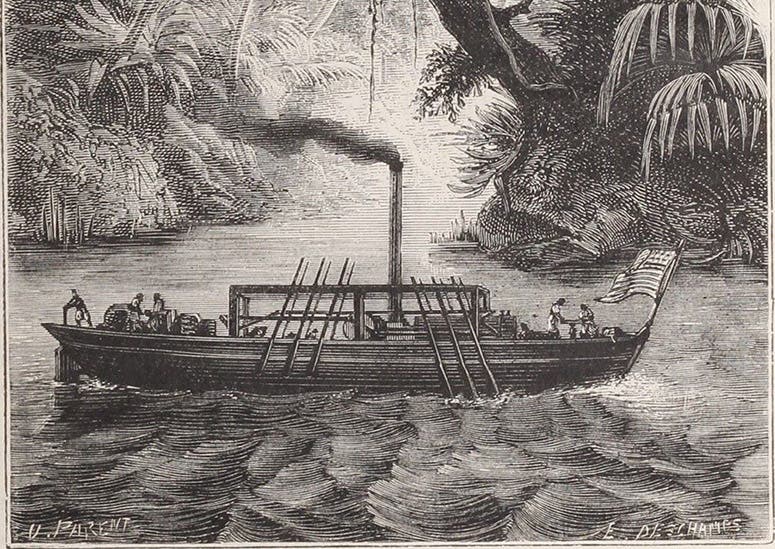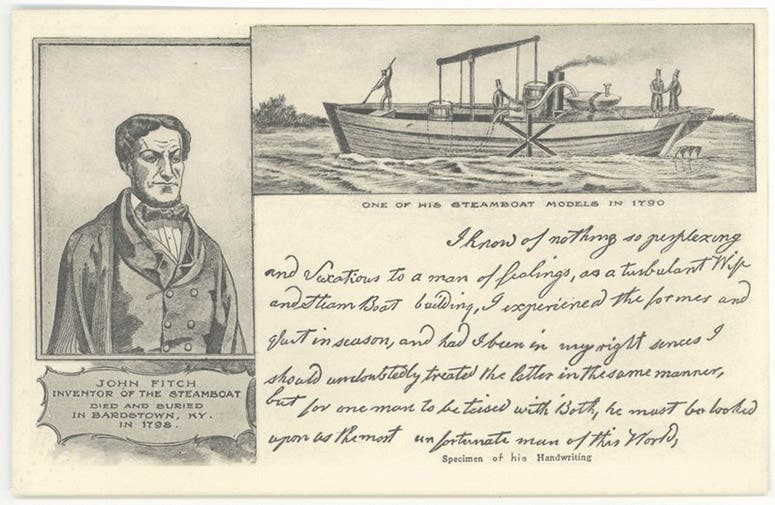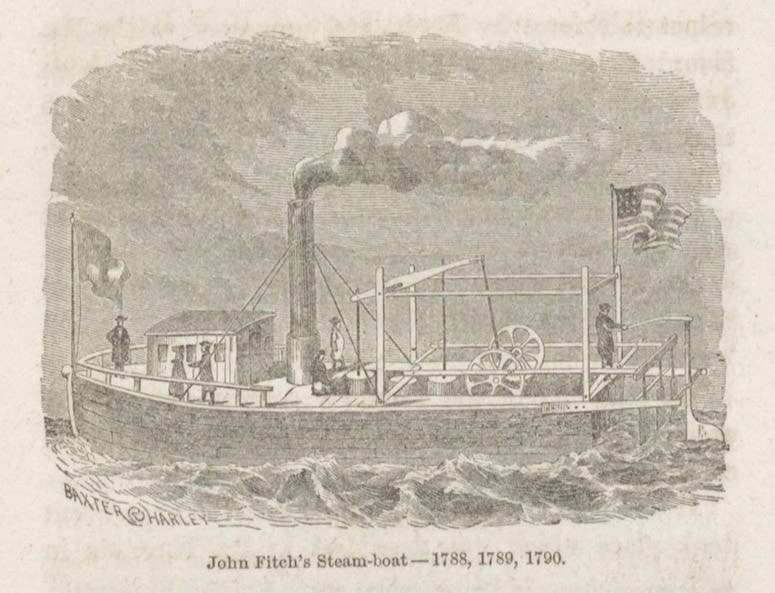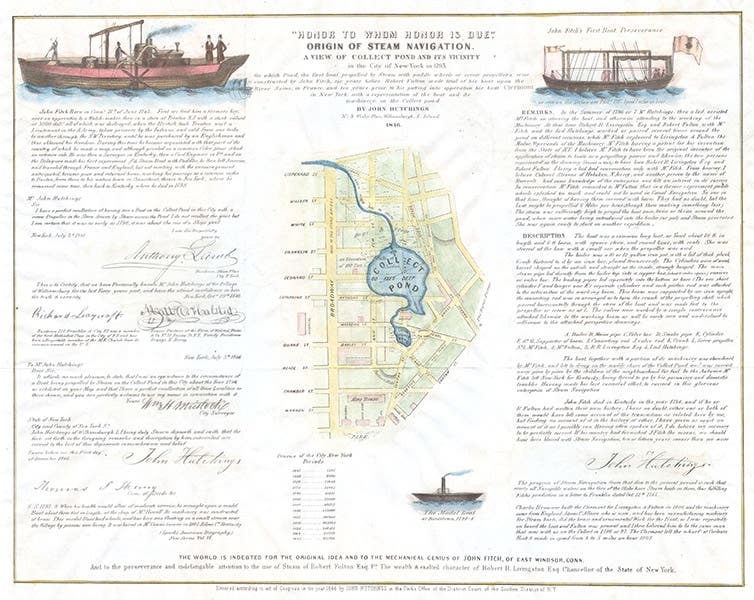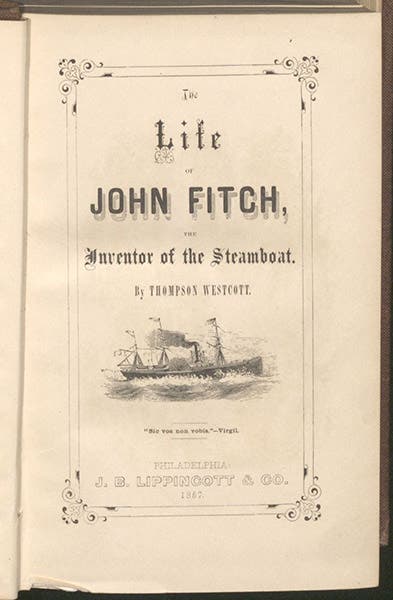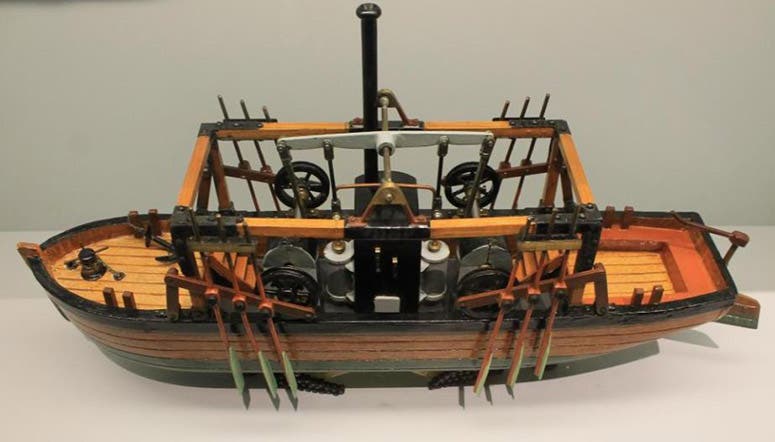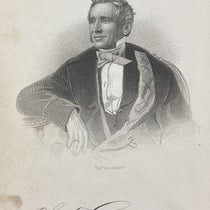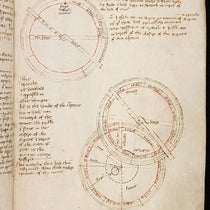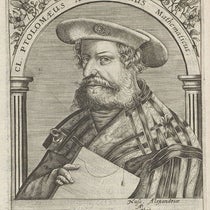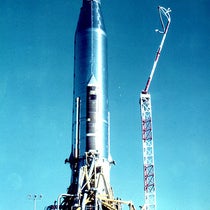Scientist of the Day - John Fitch
John Fitch, an American clockmaker, gunsmith, and inventor, was born Jan. 21, 1742, in Windsor, Conn. He apprenticed as a clockmaker, acquired a wife and son, whom he abandoned, and repaired armaments during the Revolutionary War. In the early 1780s, he began to tinker with designs for a steam-powered boat. This was difficult in the United States, since the only steam engines small enough to fit on a boat were those of James Watt and Matthew Boulton in Great Britain, the export of which was forbidden. Somehow, Fitch managed to construct a steam engine of his own, and on Aug. 22, 1787, his first successful steamboat, the Perseverance, made its way up the Delaware River near Philadelphia (first image). It was not powered by a paddle wheel (Ben Franklin had claimed that small steam engines would be unable to turn a paddle wheel), but by two banks of 6 oars each, manipulated by crankshafts driven by the engine.
Fitch managed to get exclusive rights to run a steamboat service in Pennsylvania and New Jersey, and by 1790 he had a larger steamboat with horizontal oars at the stern, flapping, it is usually said, like a duck’s feet (third image). He used it to ferry passengers up and down the Delaware River in 1790. His final boat, with rudimentary paddle wheels, was demonstrated on Collect Pond in New York City in 1793. You can see it in the upper left corner of our fourth image.
Since Robert Fulton, everyone’s favorite inventor of the steamboat, floated his boat in 1807, it would seem that Fitch has a good claim to being regarded as the true inventor of such a craft. The problem was, he never really got his business going. He had a competitor, James Rumsey, and there was so much controversy over who came first that the U.S. Patent Office was established in 1790 to adjudicate the matter. Unfortunately, Thomas Jefferson, the first head of the Patent Office, awarded patents to both men, which solved nothing. Without an exclusive, Fitch’s investors abandoned him, and his proposed ferry service was a failure (as was Rumsey’s). Fitch went to France and England to try his fortune there, and had no luck. He returned to the U.S., moved to Kentucky, where he had acquired land in the 1780s, found his land occupied by squatters, toyed with some new inventions (including a steam-powered land vehicle), and gradually drank himself to death. He said several times in letters that this was his intention, but no one can really decide if that makes his death a suicide. Some say he took an overdose of opium to speed things along. Whatever the proximate cause, he died on July 2, 1798, in Bardstown, Kentucky, where he was buried, although the present location of his grave is unknown.
Fitch has never wanted for champions. A man named John Hutchings published a broadside in 1846 extolling and illustrating Fitch’s steamboats (with a nice drawing of Collect Pond thrown in; fourth image). Thompson Westcott published The Life of John Fitch, “the Inventor of the Steamboat,” in 1857 (fifth image), a book we have in our collection, and the source for third image. More recently, a book by Andrea Sutcliffe, STEAM: The Untold Story of America’s First Great Invention (2004), is mostly about Fitch. But for some reason, he has never become a household name, forever in the shadow of the latecomer, Robert Fulton.
I do not believe that Fitch has much of a museum presence in his home country, and I know of no statues or monuments. The only likeness of Fitch comes from a late-19th century postcard – no one seems to know the source of the portrait (second image). There is a model of the Perseverance in the Technikmuseum, Berlin (sixth image). I do not know if there are similar models in the United States. If anyone knows of the location of any Fitchiana anywhere, please let me know, and I will update this post.
William B. Ashworth, Jr., Consultant for the History of Science, Linda Hall Library and Associate Professor emeritus, Department of History, University of Missouri-Kansas City. Comments or corrections are welcome; please direct to ashworthw@umkc.edu.

